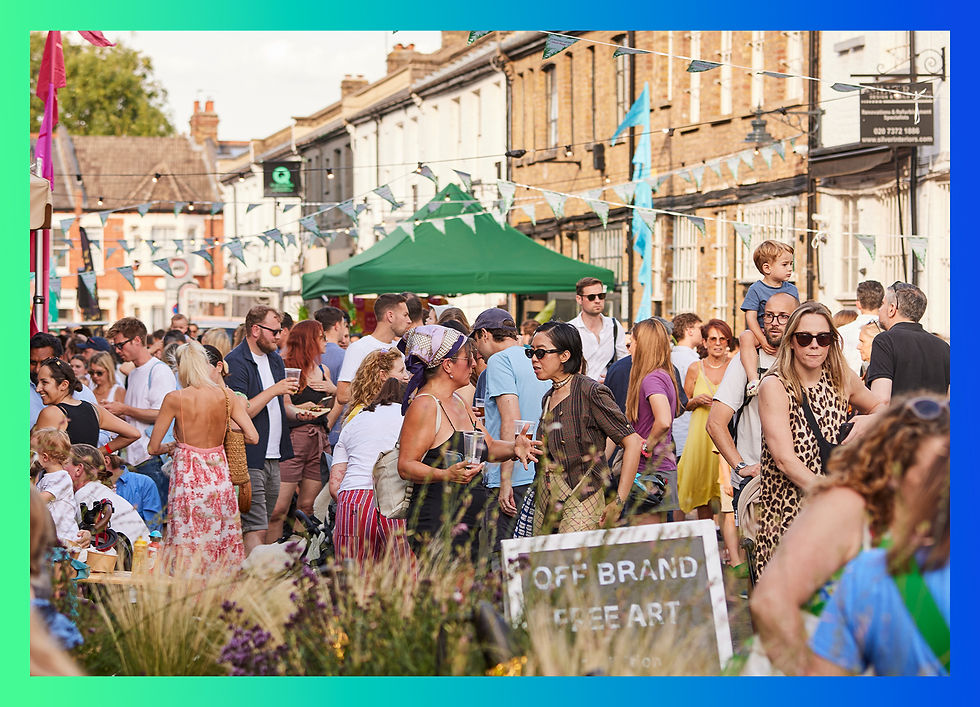Savoring the Sweet Connection of Easter and Chocolate
- Kit & Caboodle Ltd
- Apr 10, 2024
- 4 min read
Updated: Aug 20, 2024

As Easter celebrations wind down and the evening sets in, our thoughts turn to the sweet indulgence that has become synonymous with this joyous holiday: chocolate. Families across the UK have spent the day uplifting their spirits, indulging in the timeless tradition of chocolate eggs and treats.
More than 4 in 5 people from the UK (84%) planned to celebrate Easter in 2024, amounting to around 44.5 million celebrants. And recent studies indicate that Easter is a prime time for chocolate consumption in the UK. According to data from market research firm Mintel, chocolate sales see a significant surge during the Easter period, with an estimated increase of over 20% compared to non-holiday periods. This spike in sales translates to millions of chocolate treats being enjoyed by consumers across the country during the Easter holiday.

In a recent poll, 85% of respondents admitted to purchasing chocolate specifically for Easter, with an average spend of £30 per person on chocolate-related products alone. Each year, approximately 80 million Easter eggs are sold in the UK, marking it as a holiday cherished by many.
Chocolate reigns supreme in the collective Easter consciousness, with a staggering 65% of people immediately associating the holiday with this delectable treat, leaving just 12% thinking of its religious significance. But this deep-rooted connection between Easter and chocolate isn't just a recent phenomenon – it's steeped in centuries of tradition and history. From ancient times, eggs have symbolized new life and rebirth, evolving into one of the most cherished Easter gifts – the chocolate Easter egg.
The chocolate egg made its debut in Europe, particularly in France and Germany, during the early 19th century. At that time, chocolate was considered a luxury item, and crafting each piece of chocolate was laborious and costly due to the unrefined consistency of chocolate. Chocolatiers faced challenges in working with chocolate, prompting them to utilize molds for mass production. However, these early molds, typically made of metal or tin, posed difficulties in releasing the chocolate once it hardened, often resulting in damaged products. Additionally, the fluctuating European climate presented further obstacles for chocolate makers, with melting in warmer months and hardening in cooler ones.

The chocolate-making landscape saw a significant shift with the invention of a cocoa press by Dutch inventor Coenraad Johannes Van Houten, which separated cocoa butter from the cocoa bean. This innovation revolutionized chocolate production, enabling mass manufacturing. Meanwhile, renowned confectioner John Cadbury began experimenting with this new technique in the late 19th century. Cadbury's early chocolate eggs, crafted from dark chocolate and filled with sugared almonds, were marketed as Easter gifts and gained popularity as a seasonal delight.
In the early 1900s, Cadbury introduced milk chocolate eggs, surpassing the popularity of their dark chocolate counterparts. The company diversified its offerings by experimenting with various fillings, including cream, truffles, and fondant. Notably, in 1923, Cadbury unveiled its iconic chocolate egg, the Cadbury Creme Egg. This confectionery masterpiece features a milk chocolate shell filled with white and yellow fondant, resembling a real egg. The Cadbury Creme Egg quickly became a beloved Easter treat worldwide.

The creation of the Cadbury Creme Egg in 1975 marked a significant milestone in chocolate egg history. In addition to Cadbury's innovations, other chocolate manufacturers have contributed to the evolution of chocolate eggs. Brands like Lindt, Ferrero, and Nestlé have introduced a variety of chocolate eggs with different flavours, fillings, and sizes, catering to diverse consumer preferences. From luxurious truffle-filled eggs to playful candy-coated eggs, the options are endless.
Over the years, chocolate eggs have evolved to become a cornerstone of Easter festivities, symbolizing new life, rebirth, and the arrival of spring. Today, they come in all shapes, sizes, and flavours, from classic milk chocolate to decadent filled varieties, each one a testament to the enduring appeal of this timeless treat.
Indeed, the rich history of chocolate spans nearly 4,000 years, with its allure captivating Europe for over five centuries. Over time, its popularity surged with the introduction of sweeteners and the advent of significant historical events like colonization and the industrial revolution. Pioneers such as Fry, Nestlé , Mars Cadburys , and Lindt & Sprüngli have etched their names in history, shaping the chocolate landscape as we know it today.

Innovation continues to drive the chocolate industry forward, with a constant stream of new products hitting the market. Whether they're pure chocolate delights, products inspired by its essence, or designed to complement its flavours, the possibilities are endless. At Kit & Caboodle, we've been privileged to collaborate on groundbreaking launches like Bailey’s Chocolat Lux, a multisensory experience that encapsulates the essence of chocolate in every sip. Similarly, Zacapa's Discovery Board perfectly pairs rum with delectable chocolate treats, offering a harmonious blend of flavours.


The space was meticulously designed by Kit and Caboodle to deliver an experience similar to eating a piece of chocolate, from the snap of the bar, right through to the rich after taste of cocoa
The world of chocolate never ceases to amaze, from a full-size edible chocolate house in France to awe-inspiring art installations crafted entirely from dark chocolate. Across the globe, dedicated fairs and festivals celebrate the magic of chocolate, including the renowned Chocolate Week.
As our collective love for chocolate continues to flourish, we eagerly anticipate the next chapter of chocolate-inspired events. This Easter, as we relish each decadent bite, we embrace the promise of more delightful experiences that uplift our spirits and tantalize our senses.

















Comments